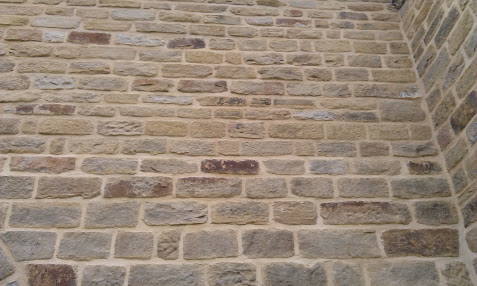Knowing how to make lime mortar for pointing is handy if you live in an older property. In fact, it’s essential for the sympathetic restoration of masonry in most properties dated before 1910.
Mixing and applying traditional forms of mortar is something of an art form. Get it right, and repointing can totally transform any property and will allow for movement and for your building to breathe.
Understanding Lime Mortar
Lime mortar has been in use for centuries and derives from calcium carbonate, including limestone, bone and shell. Two types of lime mortar can be used for restoration and pointing – hydraulic and non-hydraulic.
Chemically both are very similar. However, hydraulic lime contains impurities that let it set in two stages – first when you add water and again when the mortar is exposed to the atmosphere.
Hydraulic lime mortar is ideal for pointing thanks to its strength, durability and frost resistance.
Choosing Your Aggregate
The strength, colour and texture of your lime mortar will all be affected by the sand or aggregate you use. A washed sharp sand is ideal as the angular grains create a good bond. Using builders’ sand can result in excessive shrinking of the mortar.
When choosing an aggregate for pointing, ensure the maximum size is no bigger than one-third of the joint’s width.
Mix with Clean Water
The amount of water you add will directly impact the strength and durability of the finished mortar. Too much, and the final result will be weak. Too little and the initial hardening process won’t occur, resulting in a fragile final material.
Add clean water sparingly until you achieve a workable consistency that’s right for the job. Overwatering the mixture can also cause it to shrink when cured.
How to Mix Lime Mortar
For the best results, it’s essential to match the lime to sand/aggregate ratio of the existing historic mortar. However, a ratio of three parts sand to one part lime is generally used. Don’t be tempted to measure by shovelfuls – instead, use smaller gauging boxes.
There are two ways to mix your lime mortar – by hand or using a cement mixer. Working by hand is the traditional method and gives you greater control over the finished result.
Using a Cement Mixer
If you need to speed things up, then start with an empty mixer and add one part of sand then one part of lime. Now add the rest of the sand and dry mix for at least 5 minutes.
Now add water gradually until the desired consistency has been reached and mix for another twenty minutes. It may seem dry but will become more malleable as you mix, so don’t be tempted to add more water.
By Hand
Mix dry, two parts sand (one soft, one sharp sand) with one part lime and add the final one part of soft sand on top. Being careful not to inhale the dust. Ensure the dry materials are evenly mixed prior to slowly adding water, mixing using hand tools to a smooth malleable consistency.
Bespoke Pointing Services
If you’d prefer to leave it to the experts, BRC Leeds provides a complete pointing service from start to finish to bring your property back to life. For stone restoration and cleaning services, call us on 0113 278 6472 or use the contact form, and we’ll be happy to help.

